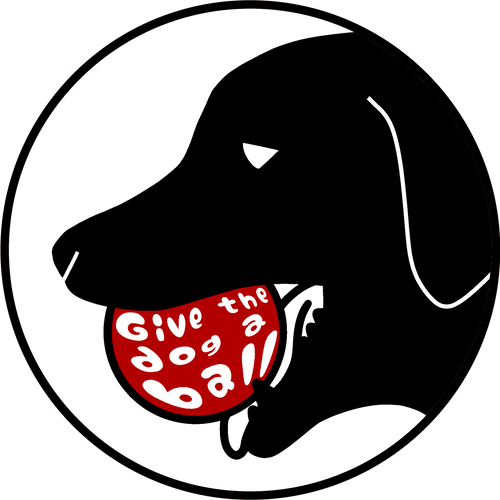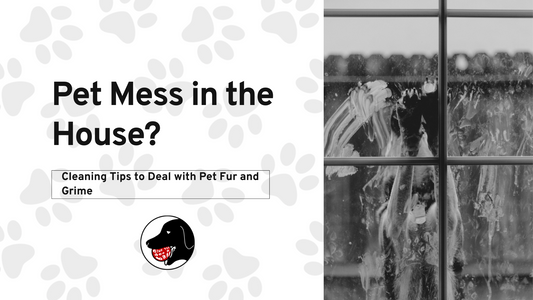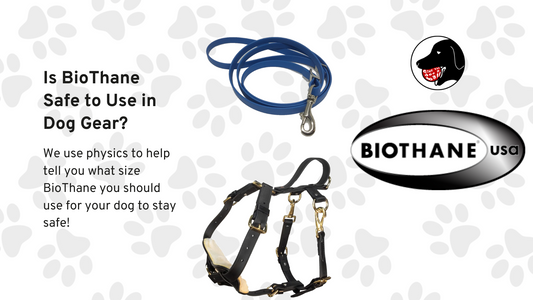Written by Samantha Montoya and Ruby Night
This post contains affiliate link(s). An affiliate link means I may earn advertising / referral fees if you make a purchase through my link, without any extra cost to you.
Potty Training, a Difficult task or Misunderstanding?
Potty training your dog is a difficult task that most pet-owners struggle with. To best train your dog, it is important to understand their thought processes. Wild dogs don't normally need to watch where they toilet, but they do avoid relieving themselves near their sleeping or eating areas. While your dog is likely from a breed long domesticated, they probably have retained this instinct. This can be used to your advantage in potty training your dog. By creating a ‘den’ where your dog sleeps, they are less likely to go potty there unless they need to. You can use a crate or penned area where there is not too much room for them to walk away from their sleeping area to potty and then go back to sleep. Because you and your dog will be sharing a space, it is your job to make sure they have enough opportunities to go potty. It is important to remember that dogs don’t inherently know where to potty or how to tell us when they need to go, so it is important to be patient. While it isn’t an easy process to potty train your dog, it can be facilitated. Below is a comprehensive guide to potty training your dog.
Potty Schedule for Young Puppies
Having a new puppy can be really exciting! But however tempting it is to just play with them all day, you need to remember that this is a crucial time in their lives to adapt to your routine. Your puppy is learning to be in your world and won't necessarily know that you want them to go potty in a certain area. Giving your puppy a structured day will help to figure out when your puppy needs to go potty. Puppies (up to eight months) are generally able to hold their pee for their age in months minus one. For more clarification, see the table below! The most important thing is to be patient and understand your dog's needs. Being a pet owner entails a lot of responsibility! Puppies have to relieve themselves often, so make sure to give them plenty of opportunities to do so.
Figuring out a schedule may seem like a big task, but young puppies have a pretty simple schedule! A simple way to ensure you are providing your puppy with enough potty opportunities is through the PEES schedule.
PEES Schedule
P - Play
E - Eat (or drink)
E - Exercise
S - Sleep
After any of these activities, you should take your dog to their potty area! The Potty Time section below will provide more information about how you should be taking your dog to go potty to ensure an efficient and easy potty training process.
Potty Training any dog
When dogs are older and are not yet potty-trained, it may be harder to understand when they need to go potty. They probably aren't used to telling someone they need to go and will just go when they need to. See the PEES schedule above as general guidelines when to take your adult dog out to go potty, and see hours your dog can hold their urine below for general information on how often you should take your dog out to attempt to potty.
Older, not potty trained dogs should have limited access to where you don't want them to potty - crates and exercise pens should help limit where they can go! Another good option is putting out pee pads, towels, or just making sure they are in an easy-to-clean location when waiting for potty time. You can find quality pee pads with Bark Potty, whose pee pads smell like grass and bark to further facilitate your potty training process. Adult dogs may not nap as long as puppies, so as an alternative to being crated or in an exercise pen consider tethering your dog to or near you to keep an eye on them for any indications that it might be potty time. Set timers for an hour shorter than their max urine holding time (see table below), and take your dog to their potty spot when the timer goes off or when you start seeing signs that your dog needs to relieve themselves.
Potty Time
At first, you may not know when your dog needs to go potty, but eventually, you will be able to tell their pre-potty behaviors and it will make potty training your dog much easier. Dogs may even be trained to tell you by barking, whining, ringing a bell, or pushing a button. When it is potty time you should do the following:- Take your dog to their potty spot
- If they go potty, give them a "Good Dog" marker and reward them! If your dog only urinated and you think they may have to poop, stay a little longer if they don't go. Be wary and go to step 3 to be safe.
- If they do not go potty (or if you are waiting for a poop), take them directly to their crate/pen/holding area and wait 10-15 minutes.
- Go back to step 1.
OOPS! There was an accident
- If you bring your dog to their potty spot and you reward them after they go potty, they know "I got a reward, the last thing I did was go potty in my potty spot. That is why I got a reward!” This is good! Next time they may try harder to get your attention because they know there is a treat for them if they are good.
- If you bring your dog to their potty spot and they go potty and you punish them, then they think "I got punished, the last thing I did was go potty in my potty spot, that must not be a good thing,” This is bad! Next time they may be less likely to tell you they need to go or hide the fact that they need to go because the last experience was bad.
- If you punish your dog while they are going potty in the incorrect place, they may think "Why is human being mean to me? I needed to go and they didn't listen to me,” This is bad! They do not understand why they are being punished and therefore will not learn.
- If you reward (or punish) your dog after they already went potty, they may wonder why they are being treated this way. The reward (or punishment) is strongest when it is as close to the behavior as possible. Additionally, if you punish them, they may relate the punishment to something else they were just doing and not learn anything at all.
Average Time a Dog Can Hold Their Urine
The table below will show the average amount of time a dog can hold its urine. A good rule of thumb for puppies under the age of eight months is to subtract one from however many months old they are - this is the average amount of hours they can hold their pee. However, take your dog out much more frequently than this! It is not a good idea to wait until the last minute until your dog has to relieve itself. That is going to be very uncomfortable for them. Additionally, note that the average time declines once dogs enter old age.
Your dog's age |
Number of hours to hold their pee (on average) |
| 8 weeks (typical age dogs can leave their litter mates) | One hour |
| 3 months | Two hours |
| 4 months | Three hours |
| 6 months | Four hours |
| 7 months | Five hours |
| 8 months and older | Six to eight hours |
| Senior Dogs | Three to four hours |
If you are not available to take your dog out often enough to keep them comfortable and you do not have the option of a doggy door, consider DoggieLawn, an indoor patch of grass that allows your dog to relieve themselves whenever they need to without having to go outside with you! It’s a great option for busy people or people in apartments! Loobani has reusable fake grass patches, which can be great for those on a budget. Additionally, if you are not available to take your dog out often enough, you can look to hire a dog sitter or dog walker to help you out! Rover is a great website to look for dog carers as they thoroughly vet their carers to ensure you meet a good match!
Have Your Dog Potty on Cue
Potty training your dog has a lot to do with verbal and visual cues! You need to teach them to understand. Start by saying a "Go Potty" cue as they are going potty, and use your "Good Dog" marker when they are done and reward them. Do this every time they go potty.
Eventually, when you learn to recognize their potty sign/dance, you can start saying your "Go Potty" cue as they do their potty sign/dance before they begin to relieve themselves. When they are done, use your "Good Dog" marker and reward them.
When your dog seems to understand the previous step, you can start using your "Go Potty" cue when you think your dog may need to go soon, but when you know they won't be able to go later. An example would be to take them potty before getting in the car when they may not have an immediate need to go, but you want them to be more comfortable.
The step above is pretty advanced, and not all dogs need to be able to do this. But it is especially helpful if you have a working dog like a therapy dog, service dog, or police dog where they have more rigorous schedules. Still, be sure to take your dog out often and ensure they aren’t often uncomfortable when they have to relieve themselves. Talk to your vet if your dog suddenly starts going potty more frequently as they may indicate an underlying medical condition.



